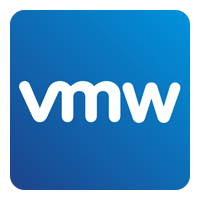Virtual desktop infrastructure (VDI) allows users to access a desktop environment and its applications from any device — laptop, PC, mobile, or tablet — anywhere in the world. VDI solutions create a virtual desktop for users to log into via networks. The virtual desktop users connect to is hosted on a central server, giving IT centralized control over the desktop, OS, and apps that a company operates.
VDI technologies have gained prominence in recent years as edge, cloud computing, and hybrid work have become commonplace, with hundreds of millions of employees, contractors, and partners needing to connect to systems worldwide. Here’s how VDI works, its benefits and disadvantages, and how to implement the technology in your organization.
How virtual desktop infrastructure works
VDI runs on server hardware, usually on the cloud, with Windows VDI being the most common OS deployed, though Linux, macOS, and other OSs can also be deployed.
The VDI hosted on a centralized server, in a physical data center, creates a virtual desktop image that can be streamed to users’ devices when they connect via a network. Once connected, the user will see their home desktop switch to the VDI image, allowing the user to connect to the remote OS, access its files, use its apps, and more.
When creating a VDI, IT teams use a hypervisor to create and manage a virtual machine (VM) on a physical server. Then they configure the VDI and add the OS, applications, and other resources. The next step is to set up the remote desktop connection broker, which will manage the link between users, the VM, and its VDI.
Once the users are connected, the actions they take on the VDI are transmitted to the VM. The VM processes the users’ actions and sends the output back, while the VDI gives users full visibility. From the users’ perspective, operating a VDI is just like using a physical computer.
Persistent VDI vs. non-persistent VDI deployments
VDI vendors and cloud providers usually offer two types of virtual desktops: persistent and non-persistent. The main difference between the two is the level of customization allowed. In turn the level of customization will affect storage requirements, costs, and skill levels required to manage the VDI.
Persistent VDI
In a persistent VDI deployment, each user has its own virtual desktop image. Each image is stored on the central server and assigned to each user it belongs to. Users can make changes to their desktops, save files, change settings, and install new apps. These changes are saved and will be available for the user the next time they log in.
Persistent VDI is usually used by developers and IT professionals who need to exert greater control over the OS. Despite its benefits, persistent VDI has drawbacks. It uses more storage space and therefore is also more expensive. Additionally, companies that deploy persistent VDI will require an in-house IT team with greater skills, as these types of VDI are more complex to manage.
Non-persistent VDI
In a non-persistent VDI deployment, customization and personalization are possible but limited to each user session. Customization in this type of VDI is applied as a layer on top of the OS. Any changes made during a session are not persistent. The VDI will fold back to its initial configuration and settings whenever the user starts a new session. Changes to settings, new applications installed, and new files are not saved “persistently” in this model.
In non-persistent VDI, all users share a pool of virtual desktops.The advantages of non-persistent VDI are clear. They use less space, are a lower-cost solution, do not require advanced skills to be managed, and are a good option for environments where changes to the OS are not needed.
VDI vs. VMs vs. desktop virtualization
The various terms and acronyms used to describe different virtual digital environments and architectures can lead to some confusion. Here’s a closer look into virtualization, VMs, and VDI to see how they differ.
Desktop virtualization
Desktop virtualization is not a specific technology but a general term used to describe the use of virtualization technologies that deliver virtual desktops. While VDI and VM are included in this term, other types of desktop virtualization also exist. These include:
- Remote desktop services (RDS): RDS enables users to remotely access desktops and Windows applications using the Microsoft Windows Server OS and the Microsoft Remote Desktop Protocol (RDP). RDS was previously known as Microsoft Terminal Server. They are identical to VDI from the users’ perspective, but can be a cheaper and more easily manageable solution for IT. The drawbacks of RDS are its customization and application limitations.
- Desktop-as-a-Service (DaaS): DaaS is a model that hosts VMs on cloud-based systems owned by third-party providers. These are scalable, flexible, and faster than most desktop virtualization options. They can also be easier to manage and offer customer support.
Virtual machines
Virtual machines are created using specialized software known as hypervisors. The VM will run on a host server, usually a cloud data center. VMs will have all the hardware and software a normal computer has, as they are assigned resources from a physical data center. This includes memory, disk, processors, and more.
VMs are used by providers to manage their computing resources better. Each VM with its own OS, applications, and data is completely isolated in the host. For a VM to provide VDI or desktop virtualization, it must undergo a specific configuration. Without this configuration, VMs are not used to provide access to many users but rather for other purposes, such as developing and testing software in isolation.
VDI
As mentioned, VDI is a type of desktop virtualization used to provide users access to a system by streaming a desktop hosted on a remote server. There are many benefits to VDI, including costs, IT centralization of operations, and making systems, apps, and files available to users no matter where they are located or what device they use.
VDI vs. VMs vs desktop virtualization chart
The following is a summary and chart of the differences between VMs, VDI, and desktop virtualization.
| Feature | VDI | VMs | Desktop virtualization |
|---|---|---|---|
| Users | A large number of users can access the virtual desktop image of a VM, which is hosted on a central server. | A low number of users access a VM running on a physical computer, usually a cloud data center. | Does not refer to a specific technology but a general concept that includes all models which offer desktop virtualization technologies, including VM, VDI, DaaS and others. |
| Storage and processing requirements | VDI usually requires more storage space and more processing power than VMs as they are used by more users. | VMs may require less processing and storage space than VDI. | Storage space and processing power demands will depend on the type of desktop virtualization technology used. |
| Management complexity | VDI can be persistent or non-persistent, with the first type being more complex to manage. | VMs’ use cases are varied and include everything from simple operations to extremely sophisticated systems and developments. Complexity varies accordingly. | Desktop virtualization can be more or less complex to manage, depending on the type of desktop virtualization technology used. |
| Best use cases | VDI is a good option for organizations that need to provide a consistent desktop experience to their users, regardless of their location. | VMs are a good option for organizations that need to run different OSs on the same physical computer, or to isolate applications from each other. | Does not refer to a specific technology but a general concept that includes all models which offer desktop virtualization technologies, including VM, VDI, DaaS, and others. |
Benefits of VDI
VDI offers a number of benefits over traditional desktop deployment methods, including reduced IT costs, easier management, increased security, improved flexibility and UX, and more.
- Reduced IT costs and better management: By providing users in an organization access to a remote desktop, applications, and files, hardware and software costs are significantly reduced. Additionally, IT has more control over the OS and the desktop, making it easier to manage, deploy, or modify systems company-wide.
- Increased security: VDI runs on VMs hosted in data centers, so it offers higher security levels than traditional dispersed endpoints. Furthermore, if a company has hundreds of workers or more, security is more efficient when using a VDI.
- Improved flexibility and consistent user experience: VDI enables users to connect to their desktops from any device, anywhere in the world. VDI can also be configured to meet the specific demands of an organization. They can effortlessly scale when needed and users can personalize their desktop if persistent VDI architectures are used.
- Improved disaster recovery: VDI can help improve disaster recovery by providing a way to restore user desktops in the event of a disaster quickly. This can help minimize downtime and ensure that users can continue to work even in a significant incident.
- Technology and innovation: From visualization to cutting-edge apps, advanced security, and high-end infrastructure, by deploying VDI companies can leverage innovative technologies that cloud and VDI vendors offer.
- Compliance: The regulatory landscape for digital operations is becoming more challenging every day. VDI tech offers organizations tools and resources to meet compliance, even for those working in the most strict industries like healthcare or finance.
Disadvantages of VDI
VDI technology does have some drawbacks, such as its complexity, performance issues, and security risks posed by centralized data.
- Complexity: VDI requires technical skills and in-house IT teams. VDI can also be complex to set up and manage, especially for large-scale deployments.
- Performance: VDI performance is tied to network connectivity and data center resources. Performance may fluctuate or slow down if configurations are incorrect and networks are inefficient.
- Centralized security risks: VDI systems centralize all data, systems, apps, and files. While these systems offer high levels of security, centralization of resources does present risks. If the central database suffers downtime or failure, it can impact all users relying on the VDI across the company.
- Users’ learning curve: New workers, contractors, or partners will need the knowledge to access and operate VDI. Users unfamiliar with VDI can find their first experiences confusing.
- Choosing the right VDI: From budget to IT needs, each organization is unique and must carefully evaluate which VDI solution is the right for them. With an abundance in the market of VDI providers, finding the right fit can be overwhelming.
- Additional costs: There are other costs to VDI, such as network management and software licenses. When deciding which VDI to purchase, users must consider all other costs and complexities.
5 VDI use cases
The global digital transformation has reimagined the VDI sector. Today, VDI is considered a powerful and versatile technology that can be used for various use cases in different industries.
Connecting a global hybrid workforce
In 2023, companies that employ remote or hybrid workers have skyrocketed in every sector. VDI is at the core of this new global movement, allowing companies to provide their workers and partners with the necessary tech to access systems anywhere in the world through virtual desktop virtualization.
Task-based and public computers
From kiosk computers to libraries to call centers, when an organization needs to provide a large number of users with online tools, software, and apps but simultaneously wants to limit the changes they can make to the system, they turn to non-persistent VDI. This technology is also used by the education and healthcare industries.
Security and compliance
Enterprises prioritizing security and compliance use VDI services to provide high data safety and privacy standards. VDI systems offer intelligent security, compliance, and privacy features which simplify management.
Bring your own devices (BYOD)
VDI is an ideal solution for organizations with BYOD policies. It can connect a broad range of devices and processing is done on a centralized server.
IT and developers
The characteristics of VDI are ideal for IT and developers. Both benefit from the technology as it accelerates deployment, configuration, testing, and collaboration.
VDI technology requirements
Several VDI technology requirements need to be carefully considered, the first of which is hardware. The hardware requirements for VDI will vary depending on the number of users, the type of applications used, and the desired performance levels. In general, VDI environments require a high-performance server infrastructure with a large amount of storage space.
Once the software is evaluated, companies must consider software. From hypervisors to creating and managing the virtual machines to the OS and apps running on the VDI, all software elements, licensees, and compatibility must be evaluated. Within the software, companies need to consider security and compliance.
Network management is an essential element of VDI. Unlike companies with BYOD policies, hybrid work companies may not have to provide connectivity to all users. However, they still need to manage, visualize, maintain, and secure networks. Network management depends on the number of devices, location of users, type of applications, speed, and other factors affecting performance. VDI networks must be monitored, safe, and private, providing low-latency, high-speed connectivity.
Nontechnical requirements are also critical to deploy a thriving VDI environment. VDI systems must be clearly defined and customized to meet the demands of the organization. Before developing and deploying, companies must understand users and business needs, which applications will be used, and the performance levels.
Support and training for in-house and third-party users cannot be left out. Efficiently operating VDI can be tricky for new users and highly complex for IT teams in large enterprises.
How do you implement VDI?
There are five simple general stages that can serve as a blueprint and guide for companies on their VDI implementation journey: planning, acquiring hardware and software, configuration, testing, and deployment.
1. Planning
The business must have a clear strategy and plan before deploying VDI. Budget, software, hardware, and user needs must be evaluated at this stage. Companies must clearly outline what the VDI will be used for and have their experts weigh in on the technology options available to meet business goals.
2. Hardware and software acquisition
This stage involves understanding the VDI market, the top vendors, what they offer and how it fits a project. Usually, VDI solutions combine hardware and software needs as an all-in-one. However, specific software may need to be developed or purchased depending on the use cases. In this stage, a VM will be created using a hypervisor and the OS, apps, and resources will be added and configured.
3. Configuration
The third step is to configure the VDI environment. This includes creating virtual desktop images, assigning users to virtual desktops and configuring the network. Security and privacy at this stage are critical.
4. Testing
A VDI should never be deployed without proper testing. Everything from performance to compliance to functionality and availability must be double-checked.
5. Deploy, monitor, and adjust
In this final stage, which is ongoing, the VDI is deployed. It is not uncommon to have to make adjustments after deployment. All users of the environment must be trained and onboarded as well. Collecting feedback and having open channels of communication and support are a must. Once the VDI is deployed, the system must be continually monitored and updated if needed.
Top 3 VDI solutions
There are many VDI solutions available on the market today, but some of the best and most popular include VMware, Citrix, and Microsoft RDS.

VMware Horizon
VMware is not only responsible for coining the term VDI in 2006, the company remains a leader in the market. With VMware Horizon companies can develop, deploy, manage, monitor, and scale virtual desktops and apps on on-premises environments, hybrid, or cloud infrastructures using a cloud-based console and SaaS management service.
VMware is also popular for its end-to-end security and cost-efficient services. The solution can deliver secure workstation-class performance, 2D and 3D graphics, and optimized voice and video support. It also provides complete visibility and simplified management for IT teams.

Citrix
Citrix also has decades of experience in the VDI market. The solution is popular for its ease of use and ability to support a wide range of devices. Citrix is highly scalable and can support many users without compromising security or performance. Citrix VDI also has a strong reputation for reliability and security.

Microsoft Remote Desktop Services (RDS)
Microsoft RDS is a VDI solution that is included with the Windows Server OS. If your company is already using a Windows Server and is looking for simple and cost-efficient VDI service, RDS is the way to go. It is popular among companies with a small to medium number of users and integrates with Microsoft products. RDS can also support other OSs, including Linux and macOS.
There are, of course, other options in the market and VDI alternatives you can implement.
Bottom line: VDI technologies continue to grow
Virtual desktop environments are expected to become more popular as companies migrate assets and architectures and modernize. They offer numerous benefits, including better management, reduced costs, improved accessibility, and enhanced security and compliance.
While they require technical knowledge and rely on connectivity and network, VDI drawbacks can be mitigated with best practices and the right tech and tools. Companies deploying VDI can also start small and scale when needed, improve workers’ and partners’ experience, and leverage cutting-edge innovation when choosing the right VDI solution for their business.
Make sure you back up your virtual machines to prevent catastrophic data loss. Here are the best VM backup software to protect your investment.

